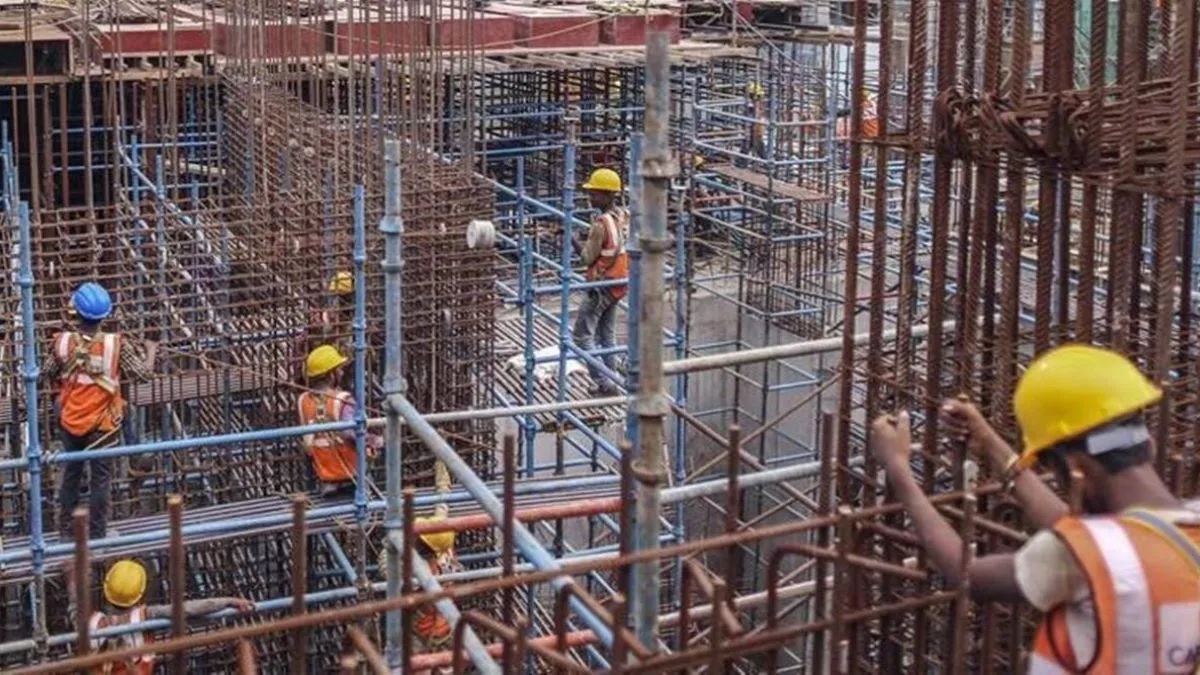The impact of the skilled labour shortage in construction has persisted since the recession (2007-2011), when approximately 2 million construction workers were laid off (more than any other industry). Since then, the construction industry has struggled to fill the many construction jobs that are becoming more readily available, owing to a lack of skilled labour. The construction industry is experiencing one of the most severe labour shortages in its history. Many construction companies report insufficient labour to meet demand. This labour shortage has far-reaching implications for worker safety and construction quality, which could have a negative impact on a company’s bottom line if investments to address the issue are not made.
Here are some of the effects of the skilled labour shortage on the construction industry:
Many people are apprehensive about working in the construction industry
Many skilled construction workers and professionals who had been in the industry for a long time were laid off during the 2007-2011 recession. Because many skilled workers had already been laid off or were nearing retirement age, the construction industry was forced to restart from scratch. Furthermore, many young people entering the labour force have avoided construction as a career path in the past due to the volatility of job security.
Trades and vocational schools are receiving less attention
Another factor contributing to fewer people entering the construction workforce is a lack of emphasis on trades in high school and college. Most young adults are encouraged to attend traditional four-year universities and never consider learning a trade.
There are fewer apprenticeship opportunities
The recession also reduced the number of apprenticeships and internships available. Apprenticeship programmes typically allow employers to “test out” new employees before hiring them full-time, while also providing the apprentice with valuable hands-on work experience. Without these apprenticeship programmes, employers hire workers before their skills are evaluated, and fewer young workers gain hands-on experience before being thrown into the field. Because of the lack of apprenticeships, the young workforce is less skilled overall. If more construction firms offered apprenticeships, it would not only attract young workers, but it would also serve to advance these new workers’ skill sets, allowing them to become highly skilled construction workers later in their careers.
Read More: The Best Ways To Enhance Property Value In a Down Market – About Pakistan
Workers who are less qualified endanger their own safety
Concerns about safety go hand in hand with the hiring of less-than-qualified workers to staff the growing number of projects. This is especially concerning in a high-stakes job like construction, where a lack of skills can have disastrous consequences.
Rising costs for both project owners and contractors
Construction costs have risen for both project owners, who have been forced to pay more to complete a project on time, and contractors, who have had to increase compensation and benefits to attract new talent.
According to a survey conducted by the Associated General Contractors of America, 52% of participants said they had increased base pay for all workers, while 28% improved benefits to remain competitive in the talent acquisition market.
How does the construction industry deal with the skilled labour shortage?
The construction industry must be able to demonstrate its worth as a career to the next generation of workers. There are numerous ways for the construction industry to do so:
Getting in touch with the next generation
To be considered as a worthwhile career path by young adults, construction firms must collaborate with local schools. This collaboration will provide opportunities to appear at career events, speak in front of classrooms, and appear on the school’s career connection websites, among other advantages. Construction firms will be able to get young adults thinking about a career in construction before they finalise their career path by visiting local high schools and colleges.
Investing in educational programmes
Construction firms must invest in training for all employees in order to create a more highly skilled workforce overall. To accomplish this, construction firms should provide extensive training for all new employees, refresher training courses for all levels of employees, and mentorship programmes that allow senior workers to pass on their knowledge to the younger working generation before retiring.
In addition to skill training, construction firms should use Occupational Safety and Health Administration training to train new employees to improve on-site safety.
Make the most of the resources from an insurance agency and a carrier
Selecting an insurance agency and carrier with construction industry expertise can result in significant reductions in total cost of risk. Some agencies and many carriers have products, programmes, and staff dedicated to assisting construction firms in controlling costs and improving their bottom lines by implementing programmes such as:
Quality assurance programmes, return-to-work programmes, fleet safety programmes, Occupational Safety and Health Administration training, ergonomics and manual handling, and nurse case managers are all examples of services provided by the Occupational Safety and Health Administration.
A short term cost in exchange for long term investment
Some construction company owners may be concerned that focusing on attracting top talent and actively investing in training, safety, and quality programmes will result in lower profits. While all of these options have some costs associated with them, construction owners should consider the consequences of doing nothing, such as not being able to attract enough new employees to successfully complete backlogged projects on time and with high quality. This can have an impact not only on the company’s top and bottom lines, but also on its brand and reputation. Consider the costs of increased worker injuries that may occur as a result of inadequate safety training and new employee orientation programmes. These worker injuries can lead to increased workers’ compensation costs, which are already a significant expense for most construction companies.
How Can Technology Aid in Reducing the Persistent Labor Shortage?
It’s easy to see why the shortage has arisen, but determining how to address the issue is more difficult. There is, however, hope in the form of advanced technology.
Historically, the construction industry has been slow to adopt new technology to optimize construction schedules and increase efficiency. However, as the supply-demand gap for skilled workers widens, businesses are embracing new construction methods.
It’s an exciting time to work in the construction industry in terms of technology. Smart technologies can lower costs and accelerate project timelines by producing less waste, reducing material resource use, increasing accuracy, and freeing up labour for other tasks. From drones that assist inspectors in collecting critical data to wireless concrete maturity sensors , these rapidly evolving technologies are giving construction companies the ability to mitigate the impact of the labour shortage.
The presence of robots on job sites will grow as technology advances. Robots are already being used on construction sites to complete repetitive tasks such as bricklaying and rebar tying because they can do so faster and more accurately than humans without taking breaks.
Read More: How 2023 is Going To Be For Pakistan Real Estate? – About Pakistan
However, even more exciting advances are being made, such as Autodesk’s 3D printing robots and Boston Dynamics’ SpotMini, which can autonomously navigate and survey construction sites. Excavation, grading, and site work are all done with autonomous heavy equipment. These tasks still require some human supervision, but it’s safe to say that future robots will be able to complete more complex tasks on their own.
New technologies may also revitalize public perception of the construction industry. Students and job seekers may see it as a new and exciting field in which to pursue a profitable and rewarding career.
By embracing innovation in technology, processes, and hiring, project managers, superintendents, and contractors can effectively alleviate the labour shortage and stay ahead of the competition now and in the future.
Conclusion
With the promise of new construction jobs only growing, there has never been a more critical time for the construction industry to combat the skilled labour shortage. Small steps taken to reposition the construction industry as a viable career option for new entrants to the labour force will make a significant difference in the long run.





















